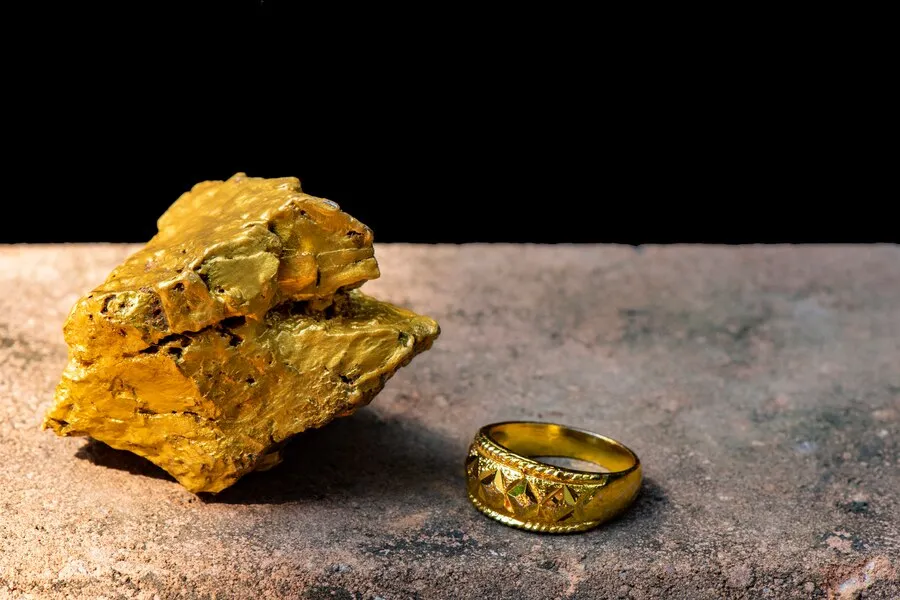From its earliest discovery to its modern status as a stalwart investment, gold has held an enduring allure for societies worldwide. Its usage has traversed the boundaries of cultural and physical landscapes, evolving from a raw, tangible symbol of wealth to an abstract marker of economic security. A noteworthy example of this can be seen in the gold necklaces worn by high-ranking officials in ancient civilizations. This piece is a tribute to the fascinating history of gold, charting its course from its inception in ancient civilizations to its current status as a strategic investment.
Gold in Ancient Civilizations
Gold’s value has been recognized for thousands of years. Its presence in the historical records of numerous civilizations reveals its profound cultural significance. The gold necklace, for example, has been an emblem of wealth and power since the dawn of history, from ancient Egypt’s Pharaohs to the Mayan elite. In many societies, the metal’s rarity and captivating beauty have linked it to the divine and the supernatural. Ancient Egyptians, for instance, believed gold was the skin of their sun god, Ra, and used it extravagantly in their art and architecture.
In South America, the Incas referred to gold as the “tears of the Sun” and crafted intricate ceremonial masks and sun discs from it. The artisans of ancient Greece made full use of gold in their fine jewelry and coinage. Even with the rise of other precious metals, such as silver, gold’s status as a symbol of wealth and power remained unchallenged in the ancient world.
Gold in the Middle Ages and Early Modern Era
As society progressed into the Middle Ages and Early Modern era, gold remained central to economic systems. Gold coins served as the primary currency throughout Europe and Asia, ensuring a universal value system. When Spain commenced its exploration and conquest of the Americas, it did so in part driven by a fervent desire for gold.
In the Middle Ages, gold was also fundamental to the arts, especially in religious contexts. Byzantine iconography used gold backgrounds to denote sacred space, while illuminated manuscripts were quite literally lit up with gold leaf application. Goldsmithing became a highly valued skill during these eras, with guilds of goldsmiths crafting exquisite religious objects, ornate jewelry, and ceremonial items.
The Gold Rush and Modern Times
The 19th century saw the advent of multiple gold rushes, which further underscored the significance of gold in the collective consciousness. The California Gold Rush of 1848, the Australian Gold Rush of the 1850s, and the Klondike Gold Rush in the late 1890s in Canada drew tens of thousands of hopeful prospectors, leading to mass migrations and profound societal changes.
In the 20th century, with the establishment of the Gold Standard, gold took on an even more strategic economic role. Countries tied the value of their currencies to specific amounts of gold, lending credibility and stability to their financial systems. While the gold standard has been largely abandoned in the modern day, gold remains a trusted reserve asset for many central banks around the world.
Gold as an Investment in the 21st Century
Today, gold continues to play a critical role as an investment. Unlike other investments, gold typically maintains its value well during economic downturns, making it a popular choice for investors looking to diversify their portfolios and hedge against uncertainties.
In addition to buying physical gold, investors today also engage in gold trading via futures contracts or invest in gold mining companies. Gold ETFs (Exchange Traded Funds), which trade like shares on stock exchanges, have also grown in popularity. These various avenues for gold investment reflect its enduring allure and its integral role in the global economy.
The Evolution of Gold
From its ancient origins as a symbol of wealth and power in civilizations like Egypt and Greece to its modern role as a strategic investment, gold has captivated societies worldwide. Its scarcity, beauty, and cultural significance have transcended time, making it a revered metal associated with the divine and the supernatural.
Throughout history, gold has played a pivotal role in economic systems, serving as a universal currency, driving exploration, and providing stability through the Gold Standard. In the 21st century, gold remains a trusted investment option, preserving its value during economic downturns and offering diversification to portfolios. It’s enduring allure and integral role in the global economy make gold a timeless symbol of wealth, stability, and economic security.’




